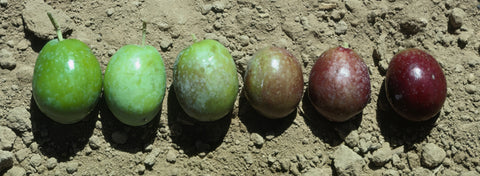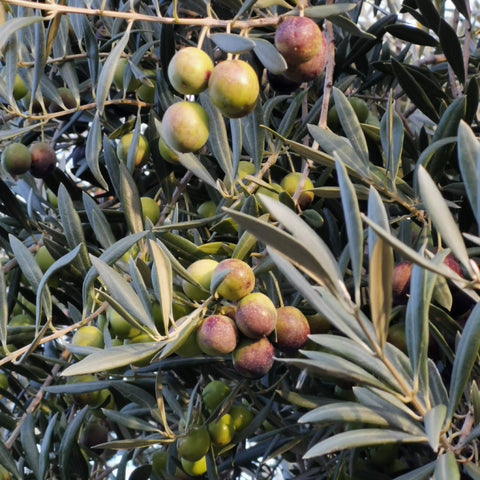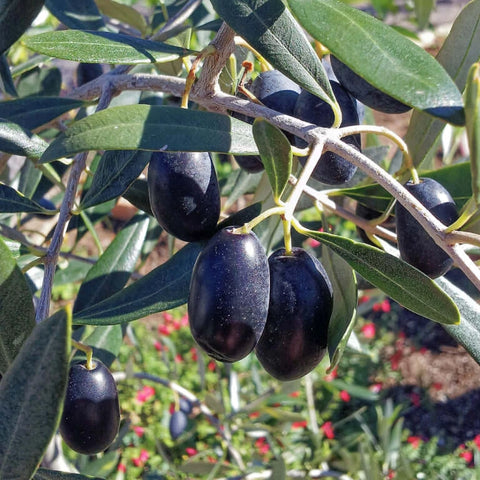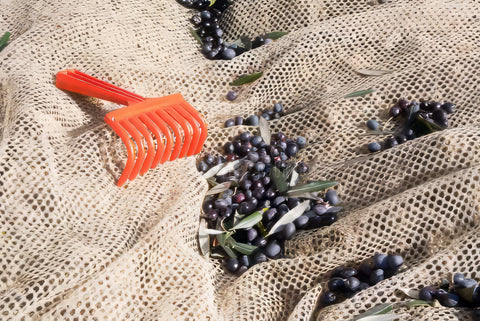Optimal Growing Conditions for Olive Trees
Gathering Olives: An Informative Manual on the Optimal Timing and Techniques for Olive Harvest
The olive tree, scientifically known as Olea europaea, belongs to the Oleaceae family and is an evergreen tree native to the Mediterranean, Africa, and China. Its optimal growth occurs in regions with a Mediterranean climate, characterized by long, hot, dry summers and relatively cool, mild, wet winters.
The Mediterranean region is the primary producer of olives globally, where they have been cultivated for thousands of years. Historical evidence dates back to 3500 BC, showing olives being grown and used for oil production on the Greek island of Crete. Olive oil, a common ingredient in Mediterranean cuisine, has its origins in ancient Greek and Roman culinary traditions.
Both olives and olive oil have diverse culinary uses and health benefits, finding applications in food, cooking, medicines, salves, and soap production. Additionally, olive oil was traditionally used as a source of lamp fuel for lighting.
From a nutritional standpoint, olives and olive oil are rich in healthy monounsaturated fats, particularly oleic acid, making olive oil the edible oil with the highest percentage of monounsaturated fat, accounting for over 70% of its content. They also contain various antioxidant compounds such as carotenoids, chlorophyll pigments, vitamin E (in the form of alpha-tocopherol), phenolic compounds (e.g., hydroxytyrosol, tyrosol, oleocanthal, oleuropein), and flavonoids (including apigenin, luteolin, quercetin, and rutin), all contributing to their protective health benefits.
Regarding olive tree pollination and fruiting, these trees vary in size, typically ranging from 3 to 12 meters (10 to 40 feet) or more, depending on the olive variety. Olive trees flower in late spring, producing clusters of small, whitish flowers. There are two types of olive flowers: "perfect flowers," containing both male and female parts capable of developing into olives, and "male flowers," which only produce pollen for pollination and do not develop into olives. Olive tree flowers are wind-pollinated, and fruit set can sometimes be inconsistent. In areas with insufficient irrigation and fertilization, olive trees may exhibit biennial cropping patterns, with a heavy crop one year and minimal fruit production the next.
The pollinated flowers ultimately develop into olive fruit, classified botanically as drupes or stone fruit, similar to peaches, plums, cherries, and other fruits with a central stone or pit. Inside the stone of an olive are one or two seeds. Olive fruits reach their maximum weight around 6 to 8 months after the appearance of blossoms and contain an oil content of 20–30% of fresh weight (measured with the pit removed) at this stage. They become black in color and remain attached to the tree for several weeks.
Olives can be picked at various stages of ripeness, ranging from green to fully black, depending on their intended use. Proper timing and techniques for olive harvesting are crucial to ensure the best quality and flavor.
When it comes to timing the olive harvest, olives change color as they ripen, progressing from green to yellow-green, straw, rose, red-brown, and finally dark red to purplish black. The ideal time for picking olives depends on the olive variety and the intended use. Green olives are harvested before full ripening, while black olives are picked when fully mature.
-
For green olives, they are ready for harvest when they have reached their full size but are still mostly green with a slight blush. The flesh should be firm, and squeezing them should release a creamy white juice.
-
For black olives, they are picked when fully mature, displaying a dark red to purplish-black color. Ripe black olives are plump, shiny, and slightly soft to the touch, with flesh that is nearly completely pigmented.
The timing of the olive harvest typically occurs in late summer to early autumn, which corresponds to March to May in the southern hemisphere and September to November in the northern hemisphere. The specific timing can vary depending on factors such as climate and the olive tree variety. Olive trees may be classified as early, mid, or late season varieties, with some maturing earlier in the season and others taking longer.
To ensure the best quality and flavor, it's essential to monitor the ripeness of the olives closely and harvest them accordingly.
When it comes to harvesting olives from trees, there are two primary techniques: hand harvesting and the use of special hand rakes.
-
Hand Harvesting Olives:
- Small-sized trees that are not too tall are suitable for hand harvesting.
- For green olives, secateurs (pruning shears) are used to cut olive clusters from the branches, preventing bruising or damage to the fruit.
- For black olives, they are picked by hand, gently grasping and twisting the fruit to release it from the stem, taking care not to damage the tree or other olives.
-
Harvesting Olives Using Hand Rakes:
- Hand rakes, also known as olive combs, are designed for olive harvesting and are useful for collecting olives from larger trees.
- Some hand rakes have hollow handles that can be attached to an extension pole to reach tall olive trees.
- To use an olive rake, start near the trunk of the tree and run the rake gently along the branches towards the tips to dislodge olives without harming the tree.
- An olive harvesting net, typically made of shadecloth or a plastic tarp sheet, is placed below the tree to catch the falling olives.
A few additional tips include avoiding overfilling collection containers to prevent fruit squashing and damage, and pruning olive trees after harvesting to promote new branching and fruiting while maintaining fruiting wood for the next year.
After harvesting, olives should be sorted based on ripeness and quality. It is best to process fresh olives within a few days to preserve their freshness. Green olives tend to store better than black ripe olives. Well-ventilated containers, such as shallow, ventilated crates, are ideal for storing olives at temperatures between 5-10°C (41-50°F). Airtight containers should be avoided to prevent mold growth.
Foraging for olives in public spaces is also an option, as olive trees can often be found in such areas. Many olive trees go unharvested, and their fruit falls to the ground, creating a mess and wasting a valuable resource. By observing the ripening of olive crops, individuals can select the optimal time for harvesting and processing olives for various culinary uses.

Olives change colour as they ripen with 1st & 2nd pictured being green-ripe, the 3rd yellow-green to straw, the 4th & 5th rose to red-brown and 6th red-brown in colour. They darken even further to become naturally black ripe olives, that are dark red to purplish black in colour. (Source: University of California, Division of Agriculture and Natural Resources, modified and enhanced by deep Green Permaculture)









Leave a comment